Every aspect of life has its beginning and end in motion. The same applies to space, and the study of space starts with understanding the principles and patterns of movement of celestial bodies. This system is highly intricate and organized.
Orbit is not just a simple circle.
From the moment of birth, everyone knows that cosmic bodies, especially planets, follow a circular path called an orbit. However, this concept is not absolute. The truth is that no orbit, along which a celestial body travels around the Sun, is perfectly circular. To varying degrees, they all resemble an ellipse. These deviations add a unique element to each planet, as the Sun affects them differently at different points in their orbit, sometimes significantly influencing climate and other factors. This influence is particularly noticeable at two specific points. What are they?
Aphelion and perihelion
Aphelion and perihelion are two opposite points in an orbit where a celestial body is either closest to or farthest away from the Sun, respectively.
What is perihelion?
Perihelion is the specific point in an orbit where a planet, comet, or asteroid is at its closest distance to the Sun. This point can mark the peak of summer for some celestial bodies, while for others it may not bring significant changes.
For instance, the Earth experiences a relatively small difference of only 5 million kilometers between its minimum and maximum distance from the Sun. As a result, these perihelion periods often go unnoticed by most people. However, it is worth noting that the Earth reaches perihelion every year on January 4-5. During this time, the northern hemisphere experiences the height of winter, while the southern hemisphere enjoys the peak of summer.
Imagine if you had the opportunity to visit Mercury, you would immediately notice its distinct orbit, which differs greatly from a perfect circle. Unlike Earth, the closest moments of approach are not significant for Venus, Jupiter, Saturn, Uranus, and Neptune.
Aphelion
At this particular point along the circumference, the celestial object is at its maximum distance from the Sun. This is not applicable to all the celestial bodies mentioned in the preceding section. It is important to mention that the term “aphelion” was coined at a later time. Originally, this point was referred to as “apogelius”. Just a short while ago, someone decided to split the word into two parts, abbreviating it as “ap.helios”. When pronounced, the dot between the word parts went unnoticed, and someone read the combination of the letters “ph” as “ph” in English. Since then, the term “aphelios” has become widely used in various languages. The Earth reaches this point every year on July 4-5.
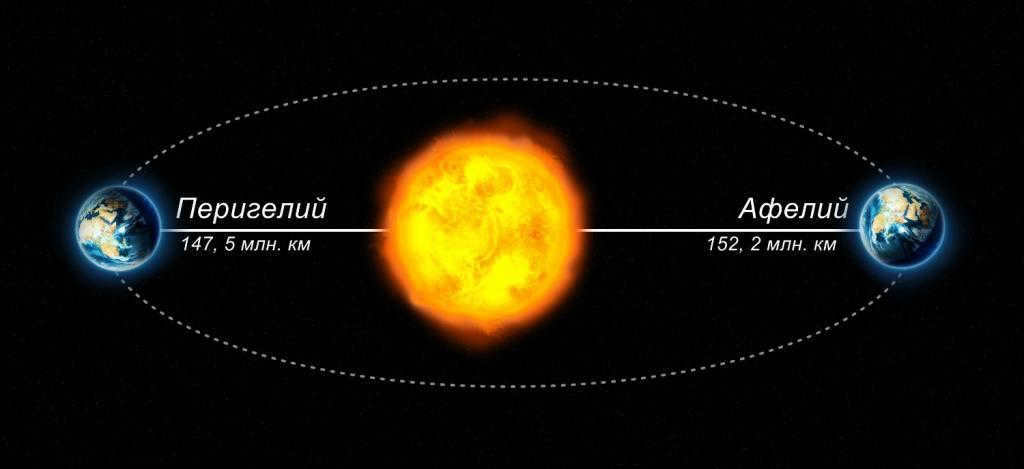
These focal points in Earth’s orbit are commonly referred to as aphelion and perihelion. These points hold significance not just for astronomers, but also for astrologers. They serve as crucial markers for making forecasts and predictions regarding global occurrences.
What are the paths followed by Mercury, Mars, and Pluto as they orbit the Sun?
There is nothing ordinary about the orbits of Mercury, Mars, and Pluto. Unlike a perfect circle, their paths resemble fully formed ovals. This means that the moments when they reach their farthest and closest points to the Sun, known as aphelion and perihelion respectively, hold particular significance for these planets.
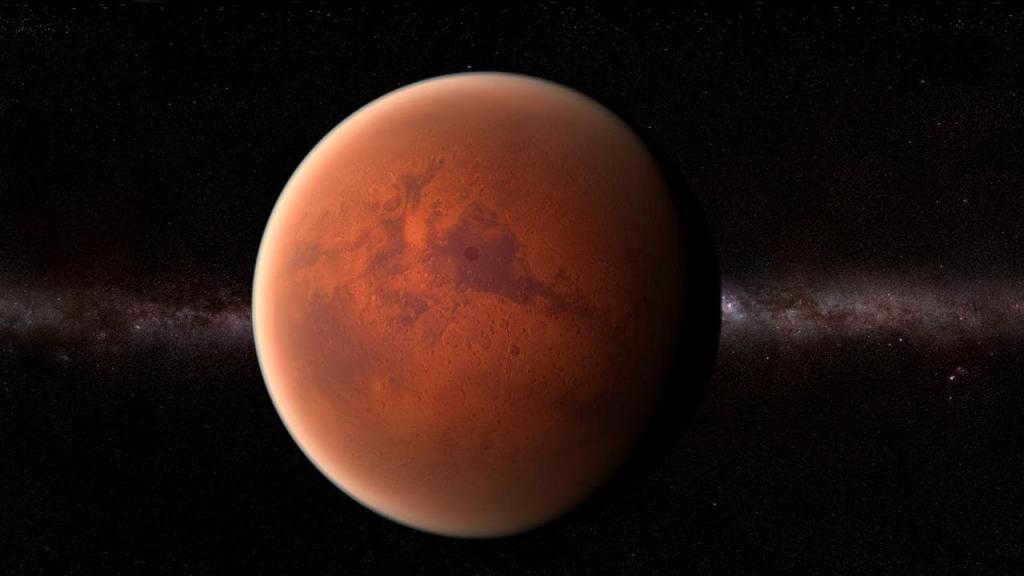

Mercury
The distance range from the star it revolves around is quite broad – from 46 to 70 million kilometers. This celestial body does not experience seasons due to its minimal axial tilt, but there is a significant fluctuation in daily temperature. When Mercury is at its farthest point from the Sun, the temperature during daylight hours drops below + 300 degrees Celsius, while during its closest approach, it rises to nearly + 430.
Mars
Compared to the orbit of Mercury, the orbit of Mars is more circular. However, there are significant variations in the timing of its closest and farthest points from the sun. These variations result in differences in the duration and temperatures of the seasons between the planet’s hemispheres. For instance, when summer begins in the northern hemisphere, Mars is at its farthest point from the sun, so it is not as warm but lasts longer. Conversely, in the southern hemisphere, summer is shorter but warmer, as Mars is closest to the sun during this time.
When it comes to temperatures, discussing them is a challenging task as they exhibit significant fluctuations not only between seasons but also throughout the day, resembling Earth’s weather patterns. For instance, at the equator, the planet may experience a rise in temperature up to +28 degrees during daylight hours, while plummeting to -40 degrees and even lower at night. As for the poles, the minimum temperature approaches an astonishing -150 degrees.
Pluto
Pluto possesses its own peculiar characteristics. One of them is its orbit, which is remarkably elongated, resembling that of Mercury. At its farthest point, Pluto is nearly 50 times the distance from the Earth to the Sun, while at its closest approach, it is closer to Neptune and separated from the Sun by only 29 times the distance from the Earth to the Sun.
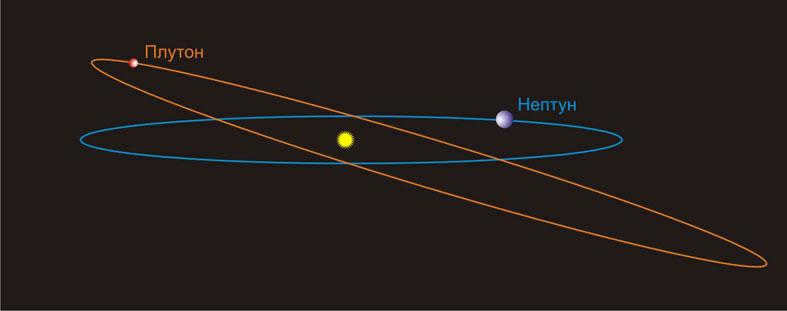
Despite intersecting with Neptune, there is no possibility of collision between the two due to the differing inclinations of their respective orbits.
Crossing Points of Planetary Orbits
These points occur when a planet’s orbit intersects the celestial equator while traveling in a north to south and vice versa direction. They do not hold any particular significance. However, astrologers find the Moon’s crossing points, known as nodes, to be of importance as they are considered to be karmic points and are used in horoscope interpretation. Based on their positioning, they determine the optimal path for personal development. Whether one chooses to believe in them or not is a personal decision.
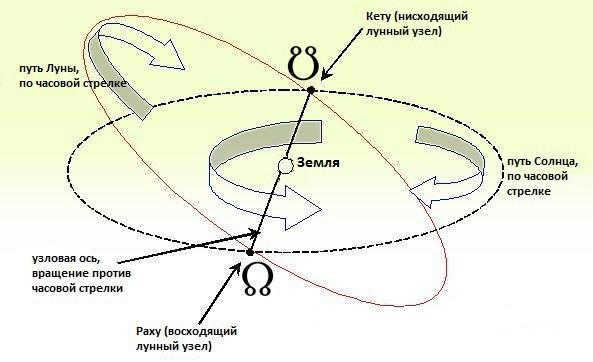
From an astronomical perspective, lunar nodes serve as the focal points for eclipses, which take place when the moon aligns with one of these points during a new or full moon.
Wrap-up
Every path is filled with enigmas and unexpected surprises, particularly when it comes to planets. In this instance, a simple circle holds a wealth of intriguing information. Nodes, perihelion, and aphelion contribute to a more comprehensive understanding of the concept of an orbit.
The primary distinction between Perihelion and Aphelion lies in the fact that Perihelion refers to the nearest point in the orbit of a planet, asteroid, or comet to the Sun, while Aphelion denotes the farthest point in the orbit of a planet, asteroid, or comet from the Sun. In the case of Earth, it follows an elliptical path around the Sun, which means that there exists one point on the path that is closest to the Sun and another point that is furthest from the Sun. These points are collectively known as apices, representing the locations of the least and greatest distances from a celestial object orbiting another astronomical body.
The path of the Earth changes its shape as a result of the gravitational pull exerted by other celestial bodies, particularly the Moon. Roughly once every 100,000 years, the Earth’s orbit transitions from being nearly circular to becoming elliptical. The disparity between the Earth’s orbit and a perfect circle is referred to as its eccentricity. When the eccentricity value is 0, the orbit is perfectly circular, while values between 0 and 1 signify an elliptical orbit.
What Does Perihelion Mean?
Perihelion refers to the closest point in the orbit of a planet, asteroid, or comet to the Sun. This term is derived from the Greek words “peri” (meaning near) and “helios” (meaning Sun). On our planet, Earth, perihelion typically takes place approximately two weeks after the December solstice, usually falling between January 2nd and January 5th.

On January 2, 2021, at 16:50 Moscow time (GMT+3), Earth reached its perihelion, the point in its orbit where it is closest to the Sun. At this moment, Earth was 147,093,163 kilometers away from the Sun. Despite being at its closest distance, it is still winter and cold in the northern hemisphere.
Why does it get so cold during perihelion, when the Earth is closest to the Sun?
The temperature drop during perihelion can be attributed to the Earth’s axial tilt. The Earth’s axis is inclined at an angle of 23° relative to its orbit around the Sun, and this inclination is responsible for the changing of seasons. During perihelion, when the Earth is closest to the Sun, the northern hemisphere is tilted away from the Sun, resulting in winter. This tilt causes the Sun to appear lower in the sky in the Northern Hemisphere, leading to less intense sunlight and shorter days. Conversely, while the Northern Hemisphere experiences winter, the Southern Hemisphere is tilted towards the Sun, resulting in summer weather.
What Does Aphelion Mean?
Aphelion refers to the farthest point in the orbit of a planet, asteroid, or comet from the Sun. It is the complete opposite of perihelion. On our planet, this occurrence takes place when the Earth is at its greatest distance from the Sun, typically falling around July 2-5, approximately two weeks after the June solstice. The word aphelion has its roots in Greek, with “ap” signifying “far away” and “helios” representing the Sun.
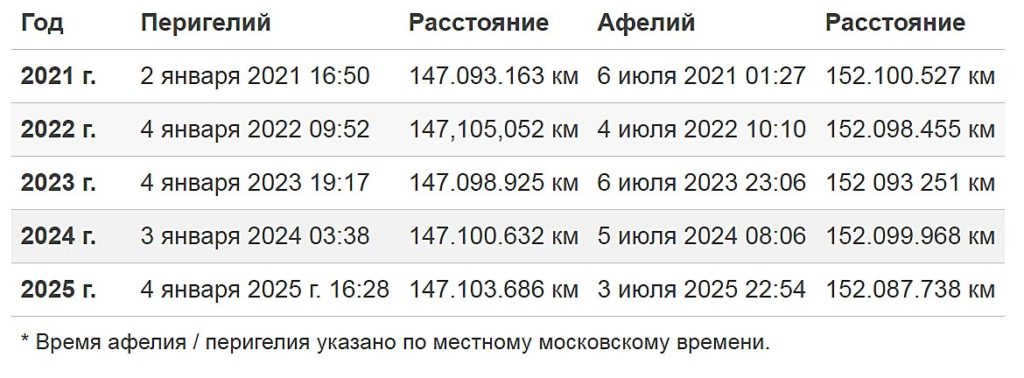
On July 6, 2021, at 01:27 Moscow time (GMT+3), the Earth will reach its aphelion, which is the farthest point from the Sun in its orbit. At this time, the Earth will be positioned 152,100,527 kilometers away from the Sun. Despite the increased distance and the Sun appearing slightly dimmer, the rocky northern hemisphere of the Earth will still experience intense heat, leading to sultry and hot weather on this particular day.
What is the distinction between Perihelion and Aphelion
When the Earth is at the position of perihelion, it is at its closest point to the Sun. This occurrence typically happens around two weeks after the December solstice, during the winter season in the Northern Hemisphere. On the other hand, aphelion refers to the Earth being at its farthest distance from the Sun. This event usually takes place around two weeks after the June solstice, during the summer months in the Northern Hemisphere.
What causes the dates of Perihelion and Aphelion to change?
The dates when the Earth reaches its perihelion or aphelion are not constant due to the changing eccentricity of the Earth’s orbit. Back in 1246, the Earth reached its perihelion on the same day as the December solstice. However, since then, the dates for perihelion and aphelion have been shifting by a day every 58 years. In the shorter term, these dates can vary by one to two days from year to year. According to mathematicians and astronomers, in the year 6430, which is 4,000 years from now, it is estimated that perihelion will coincide with the March equinox.
Perigee and Apogee
The Moon’s orbit around the Earth is also in the shape of an ellipse. The position in the Moon’s orbit that is closest to the Earth is known as perigee, while the position that is furthest from the Earth is referred to as apogee. These terms are occasionally used interchangeably with Earth’s perihelion and aphelion.
Perihelion and Aphelion on Mars
While aphelion and perihelion are primarily used to describe Earth’s orbit, as it is our home planet, these terms also have significance for other planets revolving around the Sun. Each planet has specific points in their orbits when they are farthest or closest to their star.
Take Mars, for instance, which has an even more elliptical orbit compared to Earth. In contrast, Earth’s orbit appears almost circular, and this circularity may be the reason behind the relatively stable climate on our planet.
Mars experiences four seasons as well, although they are twice as lengthy due to Mars’ two-year orbit around the Sun. In the southern hemisphere of Mars, spring and summer are comparatively shorter and warmer than in the northern hemisphere, as Mars reaches its closest point to the Sun in the southern hemisphere towards the end of spring. Conversely, southern winters are lengthier as Mars is farthest from the Sun during this period and moves at a slower pace along its elliptical orbit around the Sun.
Summary
Every year, our planet reaches its closest point to the Sun, known as perihelion. This occurs during the night of January 2-5. However, being closer to the Sun does not guarantee warmer weather. The two extreme points in the elliptical orbit around the Sun are called perihelion and aphelion. Collectively, they are referred to as apices. The main distinction between perihelion and aphelion is that perihelion is the closest point to the Sun in the orbit of a planet, asteroid, or comet, while aphelion is the farthest point.
What is the meaning of aphelion and perihelion? Aphelion and perihelion refer to the points in an orbit where a planet is at its maximum and minimum distance from the Sun, respectively.
What are the implications of these points? These points play a significant role in determining the climatic phenomena known as the summer and winter solstice. They also contribute to maintaining a temperature balance that results in alternating periods of warmth and cold throughout the year.
- The equilibrium of planet Earth
- The definition of aphelion and perihelion
- The functions of aphelion and perihelion
- Aphelion and perihelion according to Kepler’s laws
- Dates of Earth’s aphelion and perihelion
- Aphelion and perihelion of Mars, Venus, and Mercury
Equilibrium of the Earth’s Ecosystem
The Earth maintains its equilibrium through a continuous cycle of motion and rotation. This perpetual movement results in the changing of day and night, as well as the occurrence of different seasons, until the Earth completes a full orbit around the Sun. This journey takes approximately 365 days, which is the duration of a calendar year.
Throughout this orbit, the Earth encounters crucial points that play a vital role in maintaining its balance. These points are known as perihelion and aphelion, each serving to stabilize the Earth’s equilibrium. They ensure the necessary conditions for the normal existence of all its inhabitants.

Let’s take a closer look at the first point known as aphelion. This is the point where the Earth is farthest away from the Sun. One would think that at this position, we would experience less heat, but the reality is quite different. Being at this point, the Earth actually heats up more due to the slower speed and direct exposure to sunlight. It is during this period that the summer solstice occurs for the inhabitants of our planet.

We have compiled a set of resources that can assist you in transforming various aspects of your life, including relationships, finances, career, health, and purpose.
These techniques have been proven effective, with 98% of our students reporting positive changes after implementing them.
Typically, these resources are only available to our students, but for a limited time, we are offering them for free. However, please note that they will soon be removed from public access.
- Checklist “Getting Started with Astrology”: Learn how to approach astrology training in a competent and effective manner.
- Birth Charts and Planets Outline: Understand the characteristics of each planet and their impact on individuals.
- Guide to the Zodiac Signs: Classify and associate the unique traits of each zodiac sign.
- Event Space and Destiny Sector Guide “House”
- How the ruler influences the sphere of the house: Step-by-step instruction “House Ruler”
- The energetic connection between planetary and cuspidal chart readings: Hyde “Major Aspects”
- Synthesis of the classical Napoleonic quardatura as an example: “Synthesis”
- You will learn a complete plan for living your life in an optimal trajectory: Development Plan Guide
The point of perihelion represents the opposite meaning. It is when the Earth is closest to the Sun and picking up speed. Due to the refraction of the sun’s rays, we receive less heat. The winter solstice occurs at this point.
Understanding Aphelion and Perihelion
It is common knowledge that celestial objects follow an orbital path that is often not a perfect circle, but rather resembles an ellipse to some extent. As a result, each planet experiences unique gravitational interactions with the Sun at different points along its orbit. This phenomenon is most pronounced at two specific points known as aphelion and perihelion.
Aphelion and perihelion refer to opposite sections of the planet’s orbit, where it is situated at varying distances from the Sun.

When a celestial body reaches this point in its orbit, it is at its closest distance to the Sun. During this time, some of these bodies may experience maximum surface heating, leading to a full-fledged summer.
In the case of our planet, the distance between the farthest and nearest points is relatively small, approximately 5 million kilometers. As a result, these periods may go unnoticed in some regions. However, it is important to note that every year on January 4-5, the Earth reaches its perihelion, experiencing winter in the northern hemisphere and summer in the southern hemisphere.

Are you curious about the concept of astrology and how it can be applied in practical ways?
- Are you interested in gaining a foundational understanding of astrology?
- Would you like to explore your strengths and weaknesses through astrology?
- Are you ready to learn the latest and most effective astrology techniques?
- Do you have an interest in interpreting birth charts?
- Discover how to create a natal chart
- Understand the significance of planets and zodiac signs
- Gain insights into achieving financial success
- Obtain a step-by-step guide for developing your skills in astrology.
Let’s consider Mercury as a case in point, the entire population of the planet would experience the distinction between the two points since its orbit deviates significantly from a perfect circle. Apart from Earth, Venus, Jupiter, Saturn, Uranus, and Neptune also possess convergence points that lack concrete tangibility.
Being at this particular position, the planet is situated at the farthest distance from the Sun. Aphelion is not particularly conspicuous for the celestial bodies that were discussed in the preceding section. This specific point used to be referred to as “apogee”, however, it was eventually renamed and divided into two segments: ap.helios. Subsequently, due to an oversight by one of the astrologers, the punctuation mark in the middle went unnoticed, resulting in the pronunciation of “ph” instead of “p-h”. Since then, the term “aphelios” has become widely accepted in numerous languages. The Earth reaches this point annually on July 4-5.
Aphelion and perihelion are not only taken into consideration by astronomers at orbital facilities, but also by astrologers for the purpose of making predictions.
Functions of aphelion and perihelion
These points play a crucial role in regulating the temperature on our planet, ensuring that it remains within a comfortable range. They serve the important function of preventing extreme overheating or freezing, maintaining the conditions necessary for the existence of both humans and the entire Earth ecosystem.
It is clear that in order to maintain this delicate balance, it is necessary to have specific points that occur before and after the fluctuations of other Earth variables. The aphelion, for instance, is the segment of the Earth’s orbit that it reaches on July 4th with the minimum velocity. When the Earth is at this point, it is approximately 152.10 million km away from the Sun.

The perihelion point is when the planet comes closest to the Sun, at a distance of 147.09 million km, and the Earth’s speed increases. This part of the orbit is usually crossed on January 4th each year. Since the angle of the sun’s rays is 23 degrees, winter only occurs in the northern hemisphere from December to February. In the southern hemisphere, cooling can be expected in June, July, and August.
From the information provided, we can deduce that the winter months in one hemisphere correspond to the summer months in the other hemisphere, and vice versa. This is due to the angle at which the sun’s rays hit the Earth’s surface. The steeper the angle, the colder it gets.
Kepler’s Laws and the Aphelion-Perihelion Phenomenon
Johannes Kepler, a German astronomer, formulated the laws of planetary motion in the solar system, which greatly aid in understanding this astronomical phenomenon. Through his calculations and visual representations, we can observe the paths and variations in planetary motion.
His works outline the idealized orbits of planets and help in comprehending the fundamental processes occurring during the perihelion and aphelion. Let’s examine and analyze Kepler’s three laws:
All planets in the solar system have their own unique elliptical orbit, through which they continuously traverse. As a result, each planet passes through two specific points on its orbit, which signify the maximum and minimum distances from the Sun.
Kepler derived a law based on this phenomenon to determine the velocity of a planet at the exact moment it crosses these points, known as aphelion and perihelion. It is understood that when a planet passes through the first point, its velocity reaches a minimum, and conversely, it reaches a maximum when crossing the second point. When the Earth is at its farthest distance from the Sun, it experiences a decrease in its ability to move due to the weakened gravitational force. However, as the planet moves closer to the Sun, its speed increases significantly.

This celestial occurrence becomes evident when there is a change in the duration of daylight and darkness.
According to Kepler’s law, the duration of a planet’s orbit around the star is determined by the average distance between the celestial body and the star. This principle applies to all planets and moons in the solar system. By using this law, it is possible to calculate the duration of a year for each celestial body if its distance from the Sun is known.
The Earth’s aphelion and perihelion dates
Due to the fact that the Earth’s orbit deviates from a perfect circle, the positions of aphelion and perihelion have regularly shifted over the course of our planet’s history. In the year 1246, the winter solstice coincided with the Earth reaching perihelion. Following that, the dates of these points shifted by one day every 58 years. Scientists have predicted that by the year 6430, which is 4,000 years from now, perihelion will align with the date of the vernal equinox.
The closest dates for aphelion and perihelion are:
January 4 at 06:52 and July 4 at 08:10.
January 4 at 16:17 and July 6 at 21:06.
January 3 at 00:38 and July 5 at 06:06.
January 4 at 08:28 and July 3 at 15:54.
January 3 at 12:15 and July 6 at 13:30.
Aphelion and perihelion of Mars, Venus, and Mercury: A Unique Perspective
Aphelion and perihelion are not only crucial concepts in relation to our beloved planet Earth, but they also play a significant role when it comes to other celestial bodies within our mesmerizing solar system. Each of these celestial neighbors moves along its own distinctive orbit, resulting in regular fluctuations in their proximity to the radiant Sun.
In comparison to our home planet, Mars follows a slightly less than ideal orbit. This peculiarity in its path around the Sun may explain why Mars is devoid of life, as the harsh conditions created by these varying distances from the Sun make it incredibly challenging for any form of life to thrive. In stark contrast, Earth is blessed with an almost impeccable orbital circle, offering a stable and nurturing environment for a diverse range of life forms.
Mars also experiences seasonal changes, which are twice as long as those on Earth. It takes Mars approximately two Earth years to complete one orbit around the Sun. In the southern hemisphere of Mars, spring and summer are relatively warmer and shorter compared to the northern hemisphere. This is due to the southern hemisphere being closest to the Sun at the end of spring. Conversely, winter in the southern hemisphere lasts longer as Mars moves farthest away from the Sun, causing a slower rotation.
The seasonal and temperature variations on Mars are influenced by changes in its orbit. As Mars moves away from the Sun, there is a shift in the gravitational field, causing the planet’s rotation speed to decrease. This leads to the occurrence of spring in the northern hemisphere during aphelion, which is considered the longest season of the year. In this hemisphere, summer lasts for a period of 6 months, while fall and winter span 4 to 5 months. On the other hand, Mars reaches perihelion during summer in the southern hemisphere and winter in the northern hemisphere. The opposite is true during aphelion.

Venus, in contrast to the other celestial bodies in the solar system, follows a circular path around the Sun as opposed to an elliptical one. It maintains an average distance of approximately 108,208,000 km from the Sun, with its closest point known as the perihelion at 107,477,000 km and its farthest point, the aphelion, at 108,939,000 km. On the other hand, Earth has a greater distance from the Sun, ranging from 147,095,000 km to 152,100,000 km, with an average distance of 149,598,020 km.
Compared to the aforementioned planets, Mercury is the planet that is closest to the Sun. It is situated at a distance of 57,909,050 km from the Sun, but what sets it apart is its eccentricity, which happens to be the greatest in our entire solar system at 0.205. This unique orbital motion has an impact on the cardinal points and leads to regular changes in the distance from the star. For instance, at perihelion, the distance is 46,001,200 km, while at aphelion, it is 57,909,050 km.
Year after year, scientists continue to make groundbreaking discoveries in space, constantly uncovering new and intriguing aspects. Even planets that have been extensively studied can provide us with fresh insights. This article serves as an illustration of how a seemingly simple circle can captivate the attention of the scientific community. Each planet’s orbit is distinctive, and in order to gain a deeper understanding, factors such as aphelion and perihelion must be taken into account.
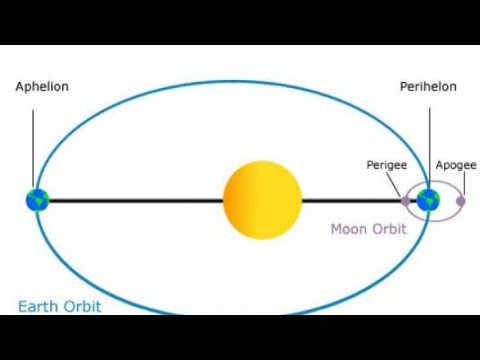
The main distinction between perihelion and aphelion lies in the fact that perihelion refers to the point in the orbit of a planet, asteroid, or comet that is closest to the Sun, while aphelion refers to the point in the orbit that is furthest from the Sun.
The term apse is used to describe one of the two extremes of the orbit of a planet, asteroid, or comet as it revolves around the Sun. It can either be the farthest or closest point in the orbit of a celestial body. When considering planets orbiting the Sun, these two extremes are known as perihelion and aphelion, representing the closest and furthest points from the Sun, respectively.
What does perihelion mean?
Perihelion is defined as the closest point to the Sun in an orbit. The term “perihelion” is commonly represented by the symbol “q”. In the context of this discussion, it refers to the point in the direct orbit of a planet, asteroid, or comet where it is closest to the Sun.
Originating from Greek, the term “perihelion” is a combination of “peri-“, meaning “near”, and “helios”, which is the Greek god of the sun. Each year on January 3rd, Earth reaches its perihelion point, where it comes closest to the Sun. At present, the distance between Earth and the Sun is approximately 91.4 million miles.
What is Aphelion?
Aphelion refers to the farthest distance from the Sun in an orbit. It is commonly represented by the symbol “Q”. In the context of this discussion, aphelion denotes the maximum point in the direct orbit of a planet, asteroid, or comet revolving around the Sun.
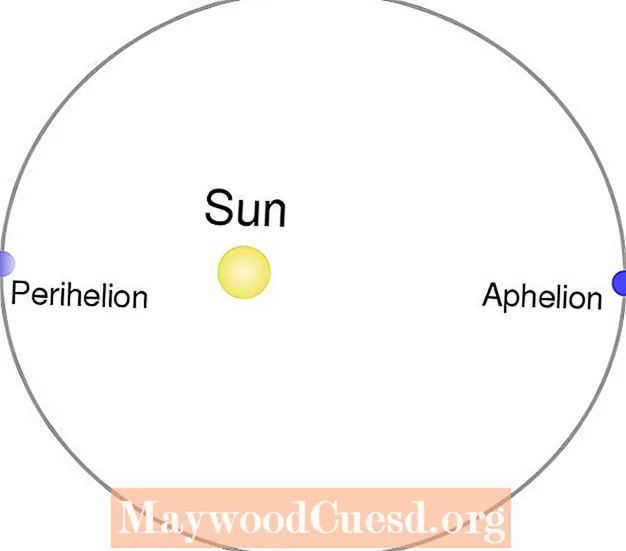
The term aphelion originates from the Greek language, with “ap-” meaning “far away” and “helios” referring to the Greek deity of the sun. Moreover, each year on the 4th of July, our planet reaches the furthest point in its orbit, known as aphelion. During this occurrence, the distance between the Earth and the Sun amounts to approximately 94.5 million miles.
What are the distinctions between perihelion and aphelion?
Apsis pertains to perihelion and aphelion, which represent the extreme points of a planetary orbit. The primary contrast between perihelion and aphelion is that perihelion designates the point in the orbit of a planet, asteroid, or comet that is closest to the Sun, while aphelion designates the point in the orbit of a planet, asteroid, or comet that is farthest from the Sun. In simpler terms, perihelion denotes the nearest point to the Sun, while aphelion signifies the farthest point. At perihelion, the distance between the Earth and the Sun measures 91.4 million miles. Conversely, at aphelion, the distance between the Earth and the Sun measures 94.5 million miles.
The distinctions between perihelion and aphelion are summarized in the table below.
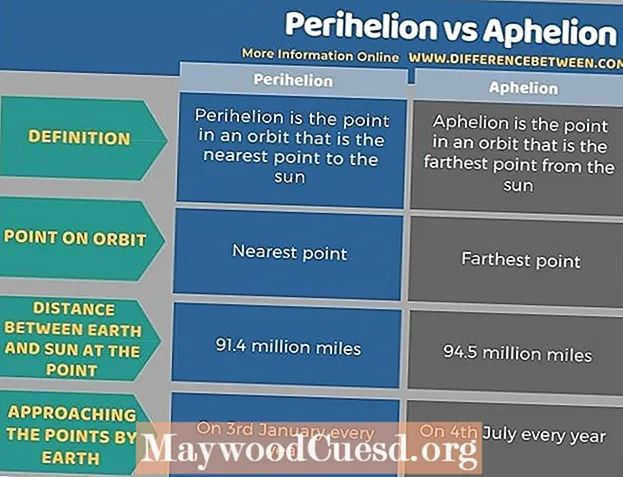
Summary – Perihelion vs. Aphelion
In celestial mechanics, there are two terms used to describe the extremes of a planet, asteroid, or comet’s orbit around the Sun. These points are known as perihelion and aphelion. The main distinction between perihelion and aphelion is that perihelion represents the point in the orbit that is closest to the Sun, while aphelion signifies the point that is farthest away from the Sun.
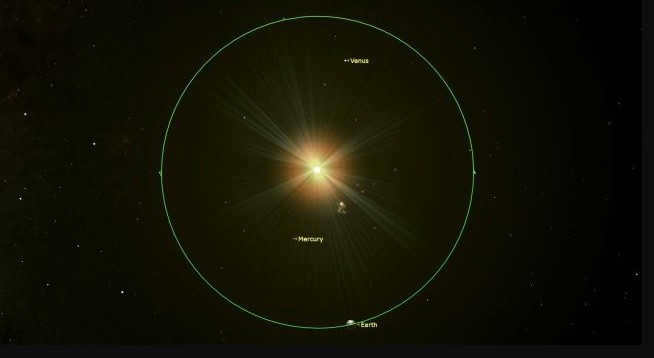
Aphelion and perihelion are two significant astronomical measurements that hold importance in the field of celestial mechanics. Now, let us examine these two quantities and their implications for our home planet, Earth.
Aphelion
Aphelion refers to the farthest point in the orbital path of a planet, asteroid, or comet from the Sun. In contrast, perihelion represents the closest point in the orbit to the Sun.
The distance between the Sun and a celestial body at aphelion is commonly known as the aphelion distance. It represents the maximum distance that a celestial body can reach from the Sun within its orbit, and it is always greater than the perihelion distance.
The aphelion and perihelion distances play a crucial role in determining the orbital characteristics of a celestial body, and they can significantly impact the amount of solar energy received by the celestial body.
Perihelion
Perihelion refers to the moment in the journey of a planet, asteroid, or comet when it comes closest to the Sun. In contrast, aphelion marks the farthest point in the orbit of a celestial body from the Sun.
The perihelion distance is the measurement of the distance between the celestial body and the Sun when it reaches the perihelion. This distance represents the minimum distance that a celestial body can be from the Sun during its orbit, and it is always shorter than the aphelion distance.
Earth’s Aphelion and Perihelion
The point in a planet’s orbit around the Sun that is farthest away is called the Aphelion. The Earth follows an elliptical path as it orbits the Sun, with the Sun located at one of the focal points of the ellipse. As a result, the distance between the Earth and the Sun is not constant, reaching its maximum at Aphelion and its minimum at Perihelion.
The exact dates when the Earth reaches these extremes in its orbit can vary slightly due to small variations in its eccentricity.
After the summer solstice, approximately around July 4-5, the Earth is at Aphelion.
The distance between the Earth and the Sun varies depending on whether it is at aphelion or perihelion. At aphelion, the distance is about 5 million kilometers greater than at perihelion, which is roughly equivalent to 13 times the distance between the Earth and the Moon. However, considering that the average distance between the Earth and the Sun is approximately 150 million kilometers, this variation is relatively minor and insignificant in the grand scheme of planetary distances.
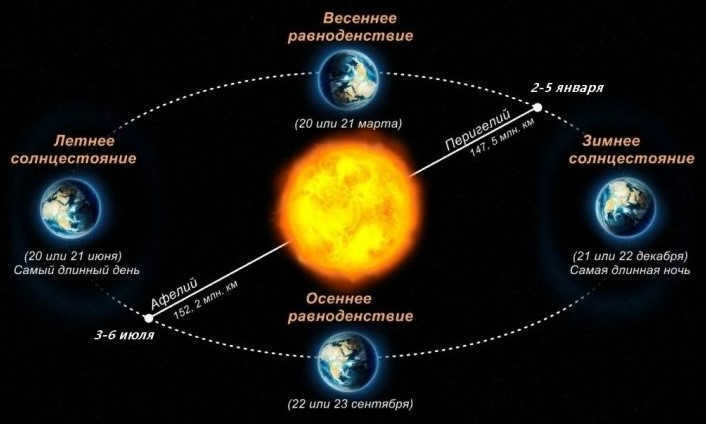
In reality, and despite the counterintuitive nature, the northern hemisphere experiences hotter temperatures during aphelion, despite being farther away from the Sun. This phenomenon is a result of the Earth’s axis tilt, which causes the Sun’s rays to hit the northern hemisphere more directly and for longer durations in the summer.
As a result, the Earth’s axial tilt plays a much more significant role in climate change than its distance from the Sun, given the relatively small eccentricity of its elliptical orbit. This understanding has significant implications when it comes to explaining shifts in climate patterns on our planet.
The Southern Hemisphere has a greater number of oceans compared to the Northern Hemisphere, resulting in a stronger impact on temperature regulation. As a result, summers in the Southern Hemisphere are cooler than in the Northern Hemisphere, leading to a lower overall planet temperature at perihelion than at aphelion.
It is important to note that the Earth’s velocity varies, with the minimum occurring at aphelion and the maximum at perihelion. This means that in the Northern Hemisphere, summer lasts for an additional 5 days compared to winter.
For instance, the Earth is approximately 94.5 million miles (152 million kilometers) away from the sun at aphelion, and about 91.5 million miles (147 million kilometers) away at perihelion. Although the difference in distance may seem small, it has a significant impact on the Earth’s climate and the duration of its seasons.
Comprehending the concept of aphelion and perihelion holds significance across various domains, such as exploring celestial mechanics, delving into the solar system, and forecasting celestial events. Furthermore, it aids in comprehending the hurdles and prospects encountered by diverse celestial entities and their potential transformations in the course of time.
Why it is crucial to be aware of aphelion and perihelion
There are numerous compelling reasons why having knowledge of aphelion and perihelion is of utmost importance. Some of the primary reasons encompass:
- Celestial Mechanics: Aphelion and perihelion hold significant significance in the domain of celestial mechanics, which pertains to the study of the motion and behavior of celestial entities. Grasping the concepts of aphelion and perihelion enables us to comprehend the forces that shape the orbits of celestial bodies and how they traverse the solar system.
- Solar System Studies: The study of the solar system is enhanced by the exploration of aphelion and perihelion, as they provide valuable insights into the system’s dynamics and its evolution over time. For instance, comprehending the distances of celestial bodies at aphelion and perihelion aids in understanding the distribution of mass within the solar system, as well as the gravitational forces that shape the orbits of these bodies.
- Predicting celestial phenomena: The knowledge of aphelion and perihelion is also instrumental in predicting celestial events such as eclipses and the appearance of comets. By understanding the distances of celestial bodies at aphelion and perihelion, we can anticipate when they will be favorably positioned for observation or other types of scientific study.





